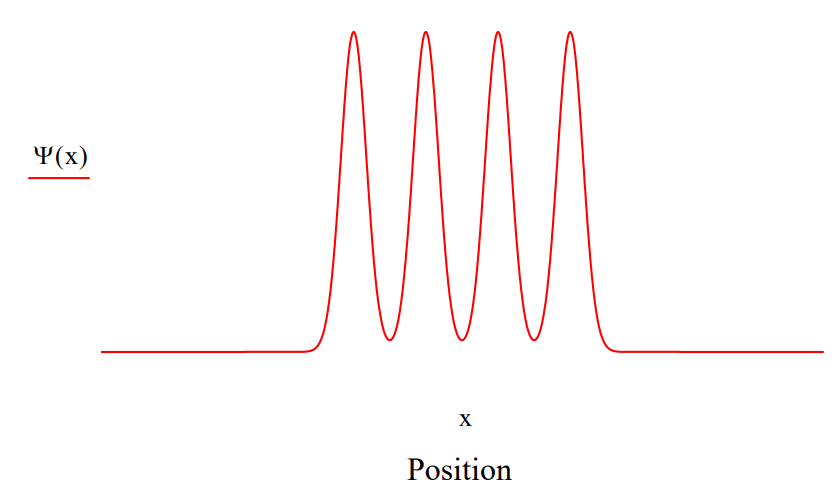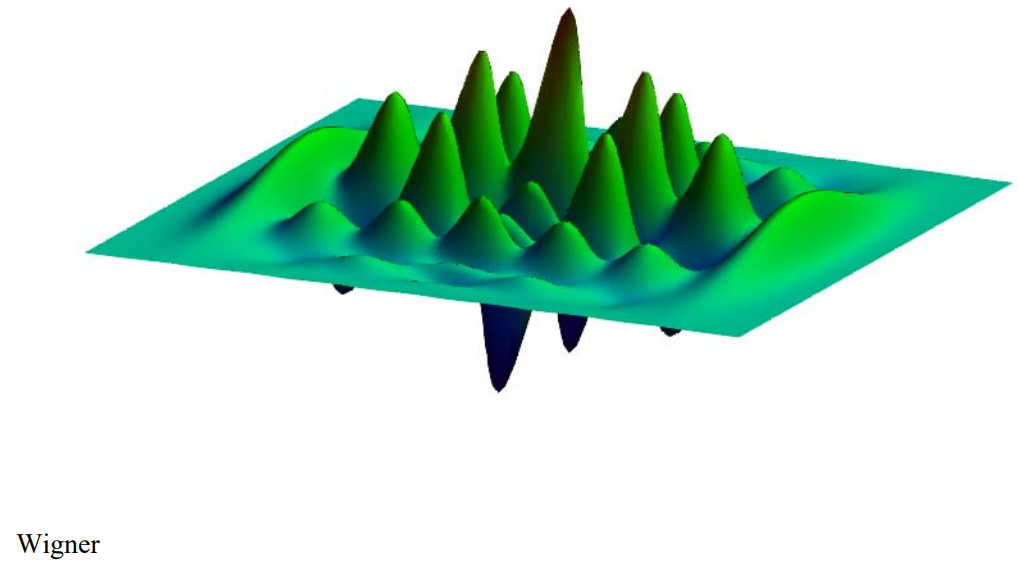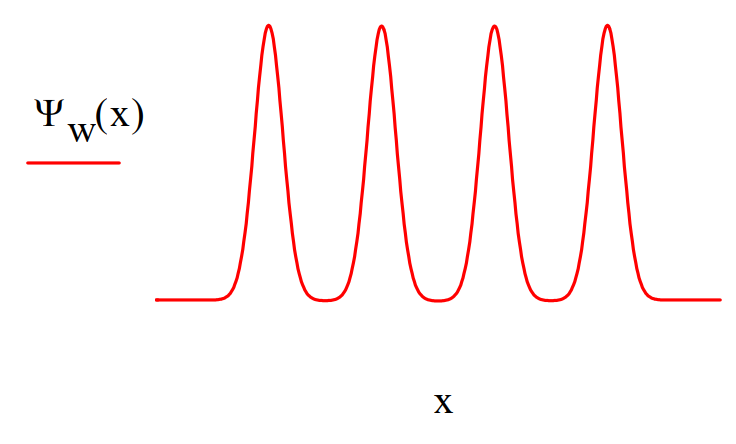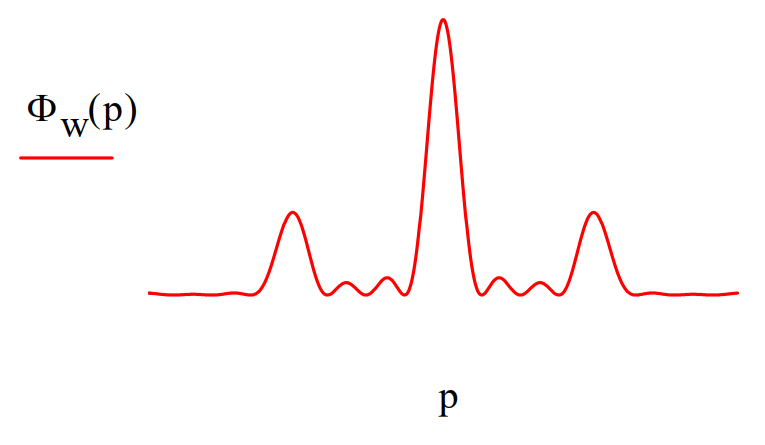1.66: Wigner Distribution for the Quadruple Slit Experiment
- Page ID
- 156459
The quantum mechanical interpretation of the quadruple‐slit experiment is that position is measured at the slit screen and momentum is measured at the detection screen. Position and momentum are conjugate observables connected by a Fourier transform and governed by the uncertainty principle. Knowing the slit screen geometry makes it possible to calculate the momentum distribution at the detection screen.
The slit‐screen geometry and therefore the coordinate wavefunction is modeled as a superposition of three Gaussian functions.
\[
\Psi(x)=\exp \left[-4 \cdot(x-3)^{2}\right]+\exp \left[-4 \cdot(x-1)^{2}\right]+\exp \left[-4 \cdot(x+1)^{2}\right]+\exp \left[-4 \cdot(x+3)^{2}\right]
\nonumber \]

The coordinate wavefunction is Fourier transformed into momentum space to yield the diffraction pattern. Note that this calculation is in agreement with the expectation that the number of minor maxima appearing between the major maxima is given by the number of slits minus 2.
\[
\Phi(\mathrm{p}) :=\frac{1}{\sqrt{2 \cdot \pi}} \cdot \int_{-8}^{8} \exp (-\mathrm{i} \cdot \mathrm{p} \cdot \mathrm{x}) \cdot \Psi(\mathrm{x}) \mathrm{d} \mathrm{x}
\nonumber \]

The Wigner function is a phase‐space distribution that is obtained by the Fourier transform of either the coordinate or momentum wavefunction. We use the coordinate wavefunction.
\[
W(x, p) :=\frac{1}{\pi^{\frac{3}{2}}} \cdot \int_{-\infty}^{\infty} \Psi\left(x+\frac{s}{2}\right) \cdot \exp (i \cdot s \cdot p) \cdot \Psi\left(x-\frac{s}{2}\right) d s
\nonumber \]
\[
\mathrm{N} :=100 \qquad \mathrm{i} :=0 \ldots \mathrm{N} \qquad \mathrm{x}_{\mathrm{i}} :=-4+\frac{8 \cdot \mathrm{i}}{\mathrm{N}} \\ \mathrm{j} :=0 \ldots \mathrm{N} \qquad \mathrm{p}_{\mathrm{j}} :=-6+\frac{12 \cdot \mathrm{j}}{\mathrm{N}} \qquad \text{Wigner}_{i, j} :=W\left(x_{i}, p_{j}\right)
\nonumber \]

The Wigner distribution is frequently called a quasi‐probability distribution because, as can be seen in the display above, it can have negative values. Integration of the Wigner function with respect to momentum recovers the coordinate wavefunction and integration with respect to position yields the momentum wavefunction.
|
\[
|
\[
|



